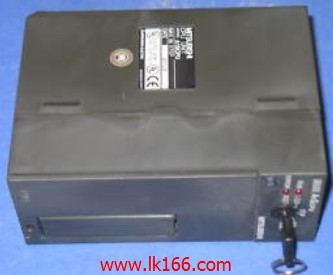
SI/QSI/H-PCF/ wide H-PCF optical cable double loop PC (control station / common station) / remote I/O network (remote master station).
Switch volume control is designed to,
According to the current input combination of the switch quantity and the history of the input sequence,
So that PLC generates the corresponding switching output,
In order to make the system work in a certain order A1SCPU-S1.
So, sometimes also known as the order control.
And sequential control is divided into manual, semi-automatic or automatic A1SCPU-S1.
And the control principle is decentralized, centralized and hybrid control three.
The length of time required to execute the instruction, the length of the user''s program, the type of instruction, and the speed of the CPU execution are very significant,
Generally, a scanning process, the fault diagnosis time,
Communication time, input sampling and output refresh time is less,
The execution time is accounted for the vast majority of A1SCPU-S1.
The response time of PLC is the interval between the time of the change of the external output signal of the PLC and the time of the change of the external output signal which is controlled by it,
Lag time, this is the time constant of the input circuit,
The time constant of the output circuit, the arrangement of the user statement and the use of the instruction,
The cycle scan mode of PLC and the way of PLC to refresh the I/O and so on MITSUBISHI A1SCPU-S1 MITSUBISHI A1SCPU-S1.
This phenomenon is called the I/O delay time effect. Self service (IN, OUT): SI optical cable.
Other aspects (IN, OUT): SI optical cable.
Data link anomaly Bureau bypass.
Inter agency extension.
Cable transformation.
Program memory capacity: 8k MITSUBISHI A1SCPU-S1.
Input / output points: maximum 256 points.
A scan cycle of PLC must pass through three stages: input sampling, program execution and output refresh.
PLC in the input sampling phase: first of all, in order to scan the sequence of all existing input latches in the input terminal of the state or input data read,
And write it into the corresponding input status register,
Refresh the input, then close the input port, enter the program execution stage. Ethernet network module 10BASE-T / 10BASE5.Common cathode input module (standard type).Temperature sensor: PT100, 3 wire system.
The A1S62RD3 and A1S62RD4 temperature sensor input modules allow the platinum resistance temperature sensing element to be directly connected to the PLC,
This component converts a signal from a temperature measuring element to a numeric value that represents a temperature measurement value,
This temperature value can be used for the control process.
The length of time required to execute the instruction, the length of the user''s program, the type of instruction, and the speed of the CPU execution are very significant,
Generally, a scanning process, the fault diagnosis time,
Communication time, input sampling and output refresh time is less,
The execution time is accounted for the vast majority of.
The response time of PLC is the interval between the time of the change of the external output signal of the PLC and the time of the change of the external output signal which is controlled by it,
Lag time, this is the time constant of the input circuit,
> The time constant of the output circuit, the arrangement of the user statement and the use of the instruction,
The cycle scan mode of PLC and the way of PLC to refresh the I/O and so on A1SCPU-S1.
This phenomenon is called the I/O delay time effect.




